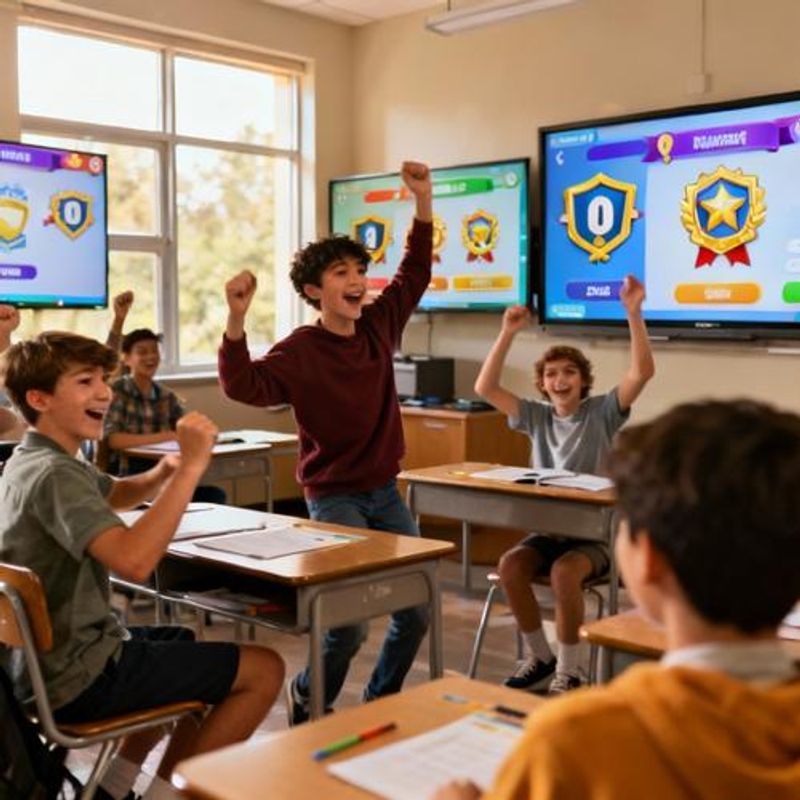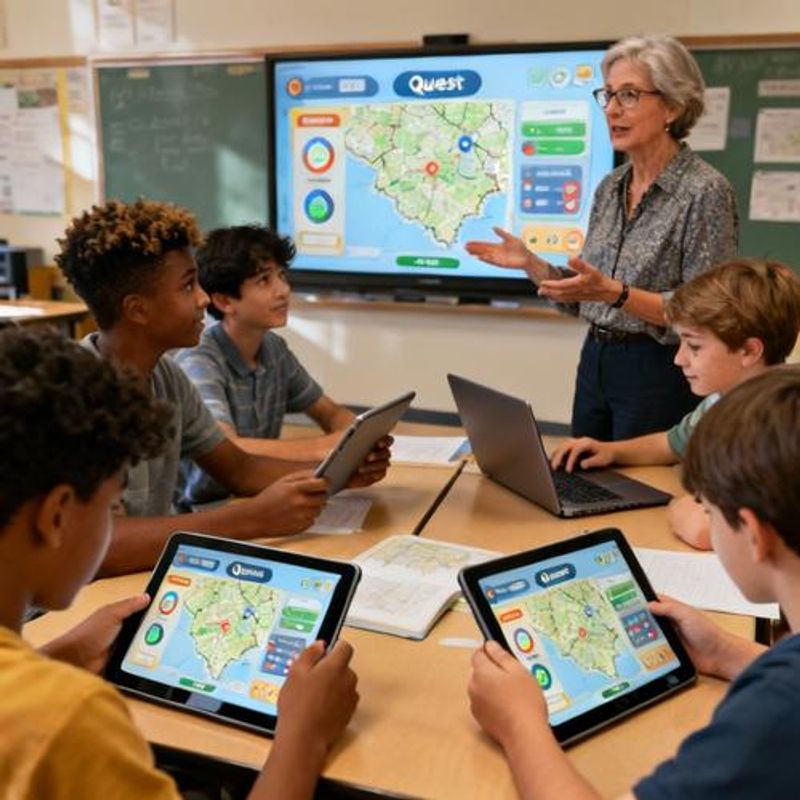25 Powerful Gamification Examples That Transform Learning: A Complete Guide for Educators

Student engagement dropping? You're not alone. Studies show that 60% of students report feeling disengaged during traditional lessons. This comprehensive guide presents 25 proven gamification examples that successful educators use to transform passive learners into active participants. Discover practical strategies you can implement immediately, complete with real classroom applications and measurable outcomes.

Why Gamification Examples Matter for Modern Educators
As educational technology evolves rapidly, educators face mounting pressure to engage digital-native students while maintaining academic rigor. The challenge isn't just about using technology—it's about understanding which gamification strategies actually work in real classrooms. You need concrete examples that have been tested, refined, and proven effective across different learning environments and student demographics.
Quick Reference: Top Gamification Categories
Before diving deep, here are the five most effective gamification categories based on classroom implementation data:
- Point Systems & Leaderboards (87% engagement increase reported)
- Badge & Achievement Systems (75% completion rate improvement)
- Quest-Based Learning (92% of students prefer over traditional assignments)
- Interactive Storytelling (68% improvement in content retention)
- Collaborative Challenges (83% increase in peer-to-peer learning)

Point Systems & Leaderboards: 8 Proven Examples
**1. ClassDojo Points System**: Award points for specific behaviors like participation, helping peers, or creative thinking. Teachers report 40% reduction in behavior management time. **2. Kahoot! Live Leaderboards**: Transform review sessions into competitive quiz games. Students see real-time rankings, driving immediate engagement. **3. Reading Race Points**: Students earn points for pages read, book reviews, or reading to younger students. Creates sustained motivation for independent reading. **4. Math Marathon Tracking**: Daily problem-solving earns cumulative points. Visual progress charts show individual growth over time. **5. Science Lab Safety Scores**: Teams earn points for following safety protocols and accurate data recording. **6. Language Learning Streaks**: Consecutive days of practice earn bonus multipliers, inspired by Duolingo's success. **7. Homework Hero Points**: Transform routine assignments into point-earning opportunities with bonus challenges. **8. Participation Poker Chips**: Physical tokens students earn and spend on privileges creates tangible reward systems.
Badge & Achievement Systems: 6 Implementation Examples
**Digital Skill Badges**: Students earn verifiable credentials for mastering specific competencies. Examples include 'Research Detective,' 'Collaboration Champion,' or 'Critical Thinking Master.' **Subject Mastery Badges**: Create tiered achievement levels—Bronze, Silver, Gold—for different skill levels within each subject area. **Character Development Badges**: Recognize soft skills like leadership, empathy, or perseverance with special recognition badges. **Cross-Curricular Explorer Badges**: Reward students who make connections between different subjects or apply learning across disciplines. **Innovation Badges**: Celebrate creative problem-solving, original thinking, or entrepreneurial projects. **Community Helper Badges**: Acknowledge students who contribute to classroom or school community through service or peer support.
Quest-Based Learning: 5 Transformative Examples
**Historical Time Travel Quests**: Students 'travel' to different time periods, completing missions that require research, critical thinking, and creative presentation. Each era unlocked leads to new challenges. **Environmental Science Missions**: Students become environmental investigators, solving real community problems through data collection, analysis, and solution proposals. **Literature Adventure Paths**: Reading assignments become character journeys where students make choices that affect their path through the story, encouraging deeper engagement with texts. **Mathematics Problem-Solving Expeditions**: Multi-step word problems presented as adventure scenarios where mathematical solutions unlock new story elements. **Language Immersion Quests**: Foreign language learners complete cultural missions that require authentic communication in target languages.

Interactive Storytelling & Collaborative Challenges
**Choose Your Own Learning Adventures**: Students make decisions that branch into different learning paths, personalizing their educational journey while covering required curriculum. **Classroom Escape Rooms**: Physical or digital puzzle sequences that require subject knowledge to 'escape,' promoting teamwork and applied learning. **Simulation Games**: Students run virtual businesses, governments, or ecosystems, making decisions and seeing consequences in safe environments. **Collaborative World-Building**: Classes create shared fictional worlds, requiring research, creativity, and cooperation across multiple subjects. **Peer Teaching Tournaments**: Students prepare mini-lessons and compete in friendly teaching competitions, reinforcing their own learning while helping others.
Implementation Templates and Quick-Start Guides
**Week 1 Setup Checklist**: Define clear learning objectives, choose 2-3 gamification elements, create simple tracking system, explain rules to students, and establish baseline engagement metrics. **Point System Calculator**: Start with 1 point per completed task, 2 points for quality work, 3 points for helping others, and bonus points for creativity or going beyond requirements. **Badge Design Template**: Create 5-7 core badges aligned with curriculum standards, design visual elements (or use digital tools), establish clear earning criteria, and plan recognition ceremonies. **Quest Planning Framework**: Begin with end goal, work backward to create 3-5 milestone challenges, include choice points for student agency, integrate assessment opportunities, and build in reflection periods.
Common Pitfalls and How to Avoid Them
**Over-Gamification**: Adding too many game elements can overwhelm students and dilute learning objectives. Start small with 1-2 elements and expand gradually. **Ignoring Intrinsic Motivation**: External rewards can undermine natural curiosity if not balanced with meaningful, autonomous learning experiences. **One-Size-Fits-All Approach**: Different students respond to different motivators. Offer multiple paths to success and recognition. **Technology Dependence**: Gamification doesn't require complex technology. Simple, analog systems often work as effectively as digital solutions. **Forgetting Assessment Integration**: Game elements should support, not replace, meaningful assessment of learning outcomes.
Your Next Steps: From Examples to Implementation
Start with one gamification example that aligns with your teaching style and student needs. Pilot it for 2-3 weeks, gather student feedback, and refine your approach. Remember: the best gamification feels invisible to students—they're simply more engaged and motivated to learn. Consider exploring AI-powered educational tools that can help automate point tracking, generate personalized quests, or create adaptive challenges based on individual student progress. The future of engaged learning combines human creativity with intelligent technology support.